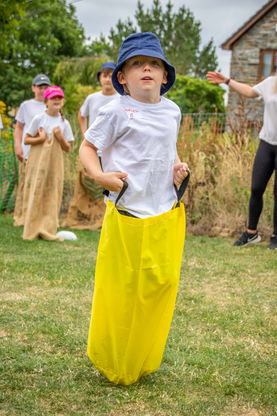PE

Intent
Our school PE programme and scheme offers a coherently planned sequence of lessons to help teachers ensure they have progressively covered the requirements of the PE National Curriculum. It ensures that children have a varied and well mapped out PE curriculum. It provides the opportunity for progression across the full breadth of the PE National Curriculum for Reception, KS1 and KS2 for both indoor and outdoor PE. This progression is clearly identified on progression maps and ladders and each lesson has been carefully planned to match these.
In the Early Years we implement key statements from Development Matters that focuses on children's physical development which is then built upon in KS1 with the development of the fundamental skills. In KS2 the fundamental skills are built upon and applied in specific sports.
At South Molton Community Primary School it is our intention to develop a lifelong love of physical activity, sport and PE in all young people. We aim to help ensure a positive and healthy physical and mental outlook in the future and help young people to develop essential skills like leadership and teamwork. Within each lesson, we strive to give every child the opportunity to develop skills in PE, consider the impact on their health and fitness, compete/perform and evaluate. These elements are always clearly identified both in lesson plans and on progression maps/ladders. All lessons are carefully differentiated which helps to ensure that learning is as tailored and inclusive as possible. It is also the intention to ensure that every child has access to at least 60 minutes of physical activity every day.
Implementation
Our detailed lesson plans ensure that all teachers are equipped with the secure subject knowledge required to deliver modern, high-quality teaching and learning opportunities for all areas of the PE National Curriculum. The guidance supports teachers in their subject knowledge, allowing them to share technical vocabulary and skills clearly, confidently and concisely. Our overarching aim is for teachers to have the knowledge and skills they need to feel confident in teaching all areas of PE, regardless of their main areas of expertise.
There is a structure to the lesson sequence whereby prior learning is always considered and opportunities for revision and practise are built into lessons. However, this is not to say that this structure should be followed rigidly: it allows for this revision to become part of good practice and ultimately helps build depth to the children’s knowledge, skills and understanding in PE. Some of our units are often themed with strong cross-curricular links to other subjects and topics. We implement a range of PE values (Active Cumbria) into our lessons (passion, belief, respect, honesty, determination and teamwork) that help shape what sport in our school should be.
Interwoven into the teaching sequence are key assessment questions. These allow teachers to assess the levels of understanding at various points in the lesson and also allow time to recap concepts where necessary, helping to embed learning. Formative assessments are supported through the inclusion of assessment checklists where notes can also be recorded to show different children’s achievements and where challenge or support is required in future lessons and to help monitor the impact against National Curriculum aims.
Impact
Each unit is mapped against the progression documents to ensure that learners develop detailed knowledge and skills across the full breadth of the PE curriculum through engaging and age-appropriate curriculum content. This all helps to make the learning memorable, allowing links to be made and ultimately creating a higher level of engagement and understanding.
The high quality and consistent approach to PE teaching significantly improves attainment in knowledge and skills in PE. The impact of using the full range of resources, including display materials, increases the profile of sport, PE and physical activity across the school. With PE vocabulary displayed, spoken and used by all learners, the learning environment will be more consistent across both key stages. Whole school and parental engagement will be improved through the use of active assemblies and PE-specific home learning tasks.
































